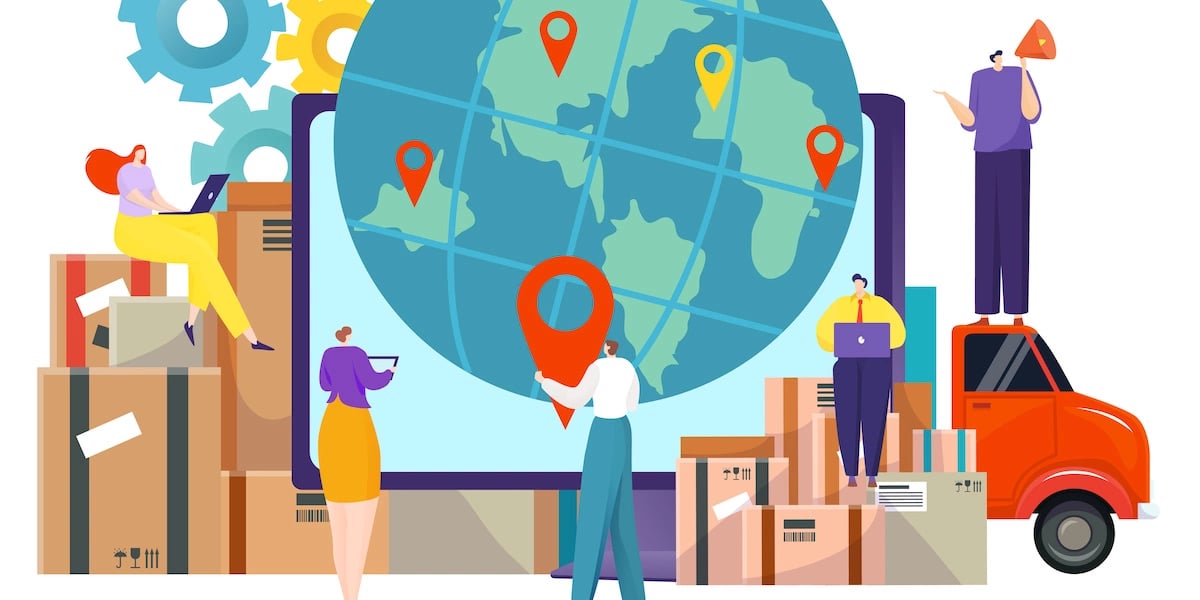You may also like
Subscribe now
for a weekly blog digest containing growth tips, industry updates, and product announcements!
6 Minute Read
How many times have you seen a study showing that logistics and supply chain leaders are making visibility a priority in the upcoming year? If you’re reading news about delivery and transportation, we’re guessing it happens at least a couple of times a year—which is great. After all, visibility is hugely important when it comes to ensuring customer satisfaction and boosting efficiency across your delivery operations.

But when decision makers say that they’re going to make visibility a priority, what is it that they’re actually prioritizing? What kinds of initiatives do last mile operators actually put into place to improve visibility, and how do they leverage improved visibility into concrete revenue, customer retention, or other operations goals?
For most people, there’s no easy answer that jumps at you when you think about these questions on visibility—and yet, actually figuring out how and why visibility impacts various business areas couldn't be more important. With this blog post, our goal is to demystify last mile visibility and help readers figure out how to effectively leverage it into improved delivery operations.
To start with, let’s clear up what we’re actually talking about when we talk about visibility. When it comes to the world of logistics, the water can get a little bit muddy around abstract concepts like visibility. To wit, it’s often hard to tell whether a particular article or think piece is talking about last mile visibility or supply chain visibility. They’re both important concepts, but they have very different implications.
These can have overlap, sure—but there are crucial differences. Supply chain visibility requires integration with systems up and down the entire supply chain, typically including those of third party organizations, freight carriers, and other supply chain touchpoints. The challenge is usually getting all this data in a timely way, and abstracting it enough that it can be understood easily and decisions can be made based on it. Scanning a list of every individual widget that’s going into a finished product is likely to be time consuming and less than productive. You want detail—but not so much that you’re stuck with total data overload.
By contrast, when it comes to the last mile, you actually do need to see individual order-level details. You’re less concerned with trends and more concerned with what’s actually happening with the deliveries that are unfolding right now.
Of course, this is yet another area where you can suffer from information overload. If you’re managing thousands of deliveries per day, even live information can leave you searching for needles in haystacks. True visibility comes down to finding those needles (i.e. deliveries that, for one reason or another, require your immediate attention) quickly and easily, which is a matter of having not just the right information at the right time, but the right interface for taking in that information.
Okay, let’s say you’ve solved the secret to last mile visibility: You have a clean, easy-to-read dashboard that displays live delivery information throughout the day, including order status updates, notes from drivers, and delivery exceptions. At a single glance, it’s easy to see what’s going right (which in order for visibility to be really useful, should be the vast majority of deliveries), and it’s even easier to see what’s going wrong.
Your dashboard might highlight anything that’s not projected to arrive on time, every order that was only partially delivered, and every delivery that failed for one reason or another—and the system might send you automated alerts for predefined exceptions to ensure that you can address them as quickly as possible. How, at the end of the day, does this kind of shipment visibility materially benefit you? Here are a few ways:
When you define last mile visibility clearly and concretely, it’s easy to translate it into real value for your organization. Not only do you have increased control over the entire last mile, you have a whole new toolkit for ensuring satisfied customers. The question is: how do you make that level of clarity and control a reality?
Again, this is something that it’s helpful to define in terms of concrete steps. In order to make this kind of visibility possible, there are few things you’ll need:
Of course, visibility can also be bolstered by things like intuitive UX and UI, bidirectional data integration with other systems, and similar tactics. But if you can tick off the boxes for the four elements above, you can lay the groundwork for last mile visibility that’s actually actionable. In doing so, you can make sure that you have the right data in the right place at the right time—with the ultimate goal of empowering dispatchers, managers, and drivers to take the right action to delight your customers and earn their trust.
for a weekly blog digest containing growth tips, industry updates, and product announcements!